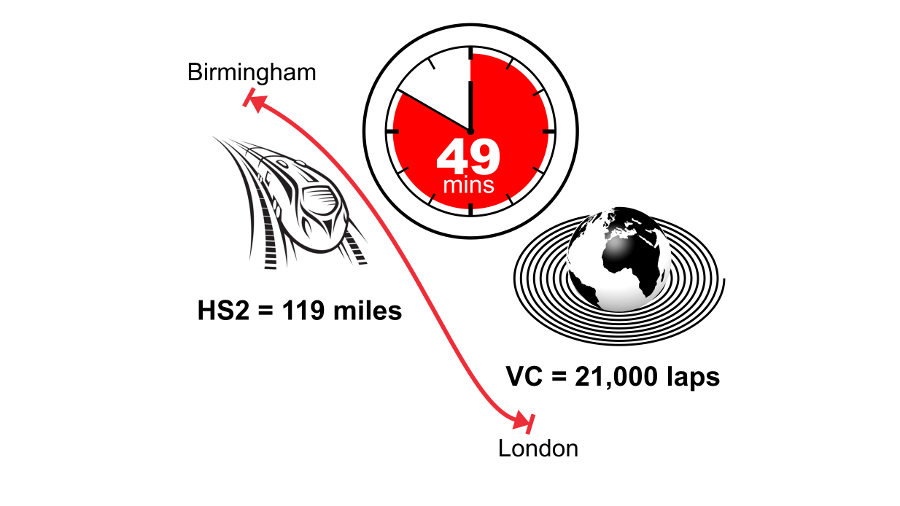Will technology outpace the High Speed Two (HS2) rail project?
Modern technology makes the whole idea of HS2 questionable

Despite the best efforts of those supporting the massive investment in the High Speed Two (HS2) rail project, the initial case for spending upwards of £40bn was speed – a shorter journey time between Birmingham and London. Apparently the current 81 minutes is just too long.
The project is opposed by many, for a variety of reasons, including cost, disruption, destruction of the countryside and energy usage, to name but a few. However, those advocating its construction marvel at the speed and capacity of the new trains, which is where the problems start.
The problem for the UK and the rail network is too many passengers. It's not that there are too few trains and they are too slow to cope with demand. The solution appears obvious: encourage people to use the latest technology to meet and converse with each other, rather than trudging to stations and climbing aboard the latest development of an almost 200 year old technology. It makes no sense.
Videoconference rather than travel
The concept of videoconferencing instead of travel has been given a boost in recent years thanks to the likes of Skype and FaceTime, but these are not standards-based and are the poor cousin of the current crop of commercial applications. Most, like Lifesize ClearSea, allow video calls and conferencing from any mobile device, on 3G, 4G or Wi-Fi, and Windows or Mac desktop environments.
Video is presented in 1080p, full HD resolution, with crystal clear audio, so it's like a face-to-face meeting. It doesn't just have to be a chat either, but a collaborative meeting, with users able to share documents, discuss and amend them – no need to remember to take them all on the train. Unlike discussing work on the train, videoconferencing is secure too, with full encryption available on any H.323 device.
The trains will apparently shuffle 1100 passengers onto 400m long trains and hurl them along at 250mph, up to 14 times an hour each way between London and Birmingham. So that's around 15,000 passengers trying to reach each of the main stations, in city centre locations, every hour, either on local trains, taxis or by car. Presumably the likely congestion has been taken into account in the journey time savings. Or not…
Efficient meetings
And of course there is no commuting with videoconferencing, not even the short walk to the VC suite, as users can now connect from their desktop, home or mobile. Meetings can be short, sharp and to the point, taking far less time out of everyone's day, compared to a meeting that has to be at least a few hours to warrant the cost of the train ticket.
Sign up to the TechRadar Pro newsletter to get all the top news, opinion, features and guidance your business needs to succeed!
Surely the money would be better spent on making high-speed broadband connectivity available to every business in the UK so the entire country benefits from this massive investment, not just the business communities in and around Birmingham and London. As the world gets smaller and exports become more important, HS2 isn't the answer, however fast it goes – the answer is videoconferencing which connects people everywhere at the speed of light.
- Matt Rhodes is Commercial Services Manager for Tamworth-based IT specialists Quiss Technology.